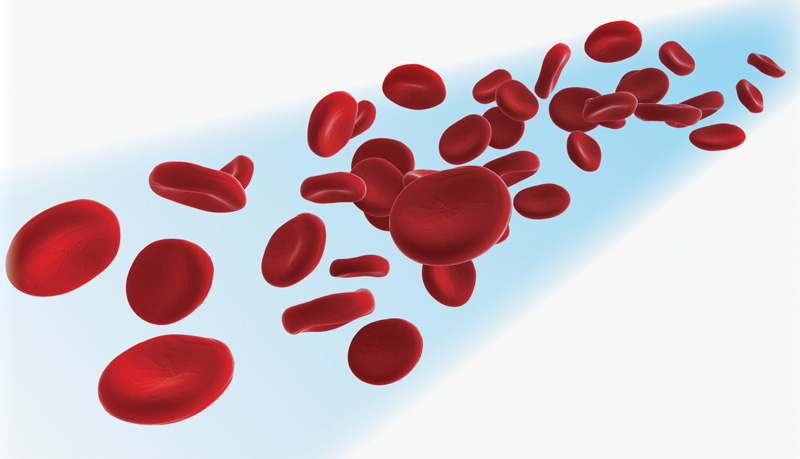WASHINGTON—When it comes to gastrointestinal bleeding, there are a mounting number of tools and methods to stop the bleeding, all with different success rates and costs. At a DDW 2024 session, several experts gave their take on bleeding management during endoscopic procedures.
{RELATED-VERTICAL}Reversing Anticoagulants
The DDW session kicked off with a presentation on how to reverse the effects of anticoagulants during a life-threatening GI bleed, by Laurel Fisher, MD, a professor of gastroenterology at Penn Medicine in Philadelphia. “Stopping the anticoagulant and resuscitating the patient are critical initial steps for all major bleeders,” Dr. Fisher told Gastroenterology & Endoscopy News.
There are several nonendoscopic options to treat bleeding, including red blood cells, prothrombin complex concentrate and fresh frozen plasma. PCC with multiple clotting factors or FFP can be used in a patient with warfarin-associated life-threatening bleeding (shock, hemoglobin drop >5 g), Dr. Fisher said. Direct oral anticoagulant (DOAC) reversal agents, such as andexanet alfa (Andexxa, AstraZeneca) and idarucizumab (Praxbind, Boehringer Ingelheim), are an option but are used rarely, Dr. Fisher noted, because of their limited availability, cost and because DOACs have short half-lives. “It is only a small subset of patients who do not respond to anticoagulant cessation and resuscitation and require their use,” she said.
For non–life-threatening bleeding, there are no good data to support use of an anticoagulant reversal agent, Dr. Fisher said, regardless of the anticoagulant. That said, she noted that physicians can use PCC if clinically appropriate.
After a bleeding crisis is controlled, the timing of anticoagulant resumption becomes important. Dr. Fisher advised a shared decision-making process with the gastroenterologist, cardiologist and patient. People with GI bleeding are heterogeneous, Dr. Fisher said, and “the lack of high-quality prospective data is an issue in all of our decision making.”
Therefore, although running prospective controlled trials is challenging, she encourages gastroenterologists to consider conducting such trials. “Our recommendations and practices will surely change with the advent of new and robust data,” Dr. Fisher said.
Achieving Hemostasis After Endoscopy
In regard to GI bleeding after an endoscopy, clinicians can access other tools depending on the scenario. DDW speaker Ian Gralnek, MD, MSHS, the chief of the Institute of Gastroenterology and Hepatology at Ha’Emek Medical Center, in Afula, Israel, and the president of the European Society of Gastrointestinal Endoscopy (ESGE), noted that injector needles, through-the-scope and over-the-scope clips (OTSCs), topical powders, coagulation forceps, and contact and noncontact thermal probes can aid in achieving hemostasis.
ESGE guidelines define persistent bleeding as active bleeding at the end of the index endoscopy that is refractory to standard hemostasis techniques (Endoscopy 2021;53[3]:300-332). In these situations, which may occur 10% of the time, topical powders or cap-mounted clips can be used to gain hemostasis, although Dr. Gralnek noted that this is based on expert experience and only has weak evidence behind it.
“Topical agents are usually easy to apply, and we can often get better access to difficult anatomic locations,” noted Dr. Gralnek, and, in turn, we can treat diffuse bleeding from a tumor with powder. Of note, the effects of the powders can wear off quickly.
Recurrent bleeding can happen up to 28% of the time after seemingly successful endoscopy (Clin Gastroenterol Hepatol 2021;19[11]:2315-2323). When a patient clinically appears with rebleeding, Dr. Gralnek noted, both the ESGE and American College of Gastroenterology recommend performing another endoscopy and then using a cap-mounted clip to treat persistent high-risk endoscopic stigmata (Am J Gastroenterol 2021;116[5]:899-917).
Sometimes the bleeding doesn’t stop. “In those cases, your first call should be to an interventional radiologist, who should be able to help you out,” Dr. Gralnek said.
Watching the Costs
When selecting the best tool for the job, costs also should be considered. “I am all about finding cost-effective tools with the same or better outcomes as more expensive devices,” DDW speaker J. Andy Tau, MD, a gastroenterologist at Austin Gastroenterology, in Texas, told Gastroenterology & Endoscopy News.
For example, Dr. Tau noted that spray coagulation using a snare is a cost-effective alternative to argon plasma coagulation to stop GI bleeding.
The depth of injury during spray coagulation is similar to that during argon plasma coagulation, Dr. Tau noted, and can be an alternative for low-volume centers that prefer not to invest in an argon plasma coagulation unit (Endosc Int Open 2021;9[6]:E790-E795).
Use of hot biopsy forceps is a cost-effective alternative to hemostatic forceps. Although hot biopsy forceps fell out of favor for biopsies, Dr. Tau said he believes they work just as well for hemostasis. “The current hemostatic forceps are basically hot biopsy forceps with slightly different jaws and a marketing team,” said Dr. Tau, adding that the difference in price can easily be fivefold or more.
One practical tip for improving visualization, particularly during sustained bleeding episodes that obscure the field due to pooling, is to turn the patient to use gravity in your favor (Endosc Int Open 2024;12[1]:E50-E51). “Change the vector of gravity in any direction you can—it doesn’t matter,” Dr. Tau advised.
At DDW, Dr. Tau showed a case in which he successfully used an OTSC to contain rebleeding after interventional radiology embolization had failed. He also showed another case in which he did not deploy the OTSC shallowly enough and exacerbated bleeding. Hemostatic powder halted the bleeding and allowed an interventional radiologist to achieve durable hemostasis via embolization.
Dr. Tau said he regularly posts videos of cases on social media, both those that went well and those that did not, noting “we can all learn from each other’s experiences.”
—Marcus A. Banks
Drs. Fisher and Tau reported no relevant financial disclosures. Dr. Gralnek reported financial relationships with AstraZeneca, Boston Scientific, Check-Cap, Clexio, Medtronic, Motus GI, Olympus and Viatris.

